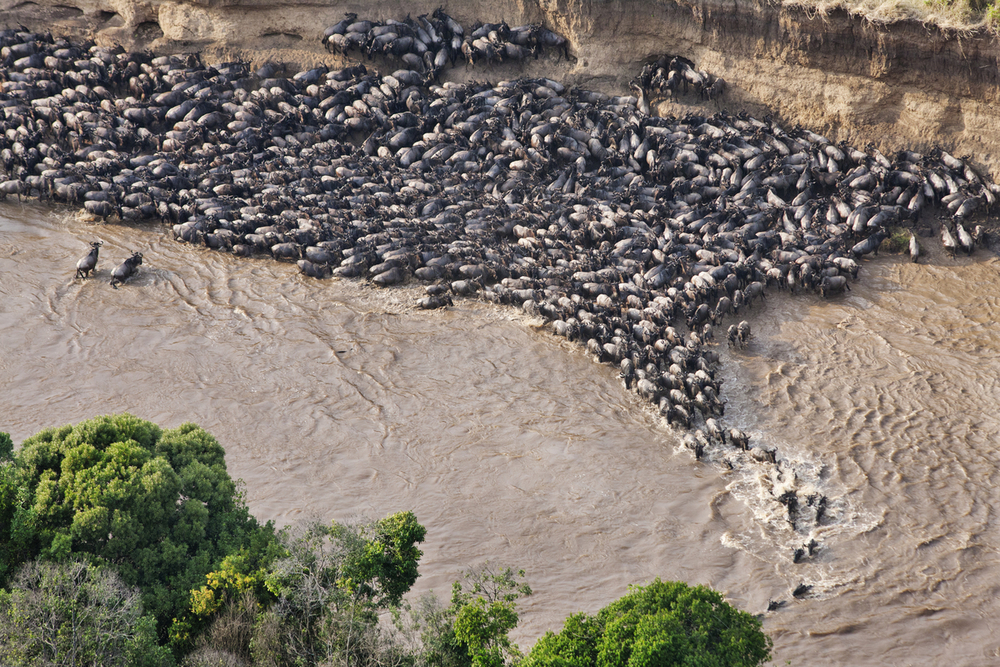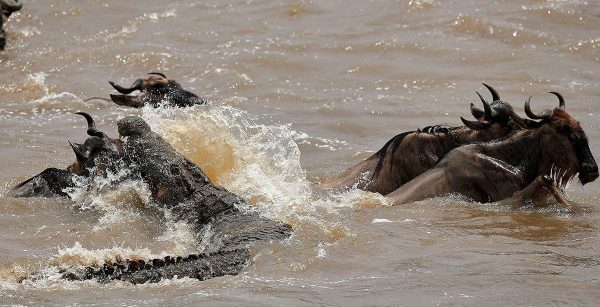The Rivers in serengeti National Park : The Serengeti National Park is home to a diverse range of ecosystems, including river systems. The Serengeti national park’s rivers are worth visiting for a wildlife safari because they are home to a variety of water-loving creatures that you can view. You’ve probably seen footage of the Serengeti’s rivers on National Geographic or other television shows. In the famed Serengeti national park, there are five rivers to be found. Three of the five are on the park’s borders with nearby protected areas or local towns. The Mara River, Grumeti River, Mbalageti River, and the famed Seronera River are the most well-known Serengeti national park Rivers.

Big crocodiles, wildebeest, and zebras abound in the Mara and Grumeti rivers. Every year, the Great Migration passes through those rivers. The Seronera River flows through the Serengeti Park’s central portion, while the Mbalageti River flows through the park’s western side.
The Grumeti River
The Grumeti River is a river in Tanzania’s Mara Region that flows almost entirely through Serengeti National Park’s western corridor. It runs westward and empties into Lake Victoria’s Speke Gulf. During the Great Migration, the crocodile-infested Grumeti River is one of the first challenges faced by wildebeests migrating from Tanzania to the Maasai Mara.

During the months of May, June, and July, safaris are conducted between the Central Serengeti and the Western Corridor in search of the Great Migration. The Great Migration crosses the Grumeti River between the end of May and June. It is not a difficult crossing because the riverbanks are not steep and the water is shallow.
The Grumeti River is a fantastic option for those looking to escape the busy season, which runs from mid-June to September and is when the parks are busier and travel is more expensive. The Grumeti River crossings normally take place in a one-or two-week window in May and June, although exact timing is tough to forecast because the migration follows the rains.
River crossings on the Grumeti are most common as the wet season ends and the dry season begins. As a result, there is a chance of sporadic rain, which could cause problems on the roads and with scheduled outings. In addition, the grass is usually taller and greener, making it more difficult to notice wildlife.
The Mara River
The Mara River flows north from Kenya’s Mau forests, south through the Masai Mara National Reserve, west through the northern Serengeti, out via the enormous Masarua wetlands, and finally into Lake Victoria at Musoma. In the Serengeti environment, this is the only continually flowing river. On its banks in the Mara and along its major tributaries in Serengeti National Park, it supports extensive riverine forests. The Western Corridor of Serengeti National Park is formed by the parallel catchments of the Grumeti and Mbalageti Rivers, which are located south of the Mara. The Duma, Simiyu, and Semu rivers, which flow through Maswa Game Reserve, are substantially smaller. The terrain is undulating, with numerous minor seasonal streams draining into the major rivers.

The Great Migration crosses the Mara River in the Serengeti’s north from July to October; the crossing is challenging not only because of the crocodiles, but also because of the river’s strong current and steep cliffs. During the descent or climb of the river, many animals are crushed by others or fall to their deaths. Herds sometimes take hours to decide to cross, mustering the courage to confront the perils and hazards that lie ahead.
The Seronera River
The Seronera River, which is slightly over 30 kilometers long and located in the Central Serengeti, is the most famous and frequented. Several game drives wind their way along the river, providing good opportunities to see predators including lions, leopards, and cheetahs. This is without a doubt one of the best spots in the Serengeti National Park to see cheetahs and lions; with its flowing rivers and seasonal marshes, it is an ideal animal habitat.
Leopards are frequently seen on the branches of the sausage trees that flank the Seronera River, where they normally pull their victims and keep them secure from other predators. According to some research, this is one of the locations in Africa with the largest concentration of leopards. The lions, on the other hand, are frequently seen near the river, always on the lookout for prey that comes to drink.
The Seronera River is also home to the massive Nile crocodiles, which frequently stand still on the riverbanks with their mouths open to keep their body temperature in check. Hippos likewise spend their days submerged in water, with just their ears and large nostrils visible, and then emerge from the water bed at night to graze on the grass that grows near the river banks.
The Mbalageti River
The Mbalageti River is found in the Western Corridor of the park, a less-visited location where the Great Migration takes place in May and June. The river is a vital supply of water for the animals that live in this area.

Mbalageti is located directly on the Great Migration’s thunderous path. The Mbalageti River Valley connects the plains to the woodlands and serves as a natural corridor for the annual migration of wildebeest and zebra. This valley, which lies precisely on the main wildebeest and zebra migration routes, provides great game viewing during both the northward and southbound migrations. The Martial Eagle, the Serengeti’s most spectacular and powerful raptor, is also found in the valley.


